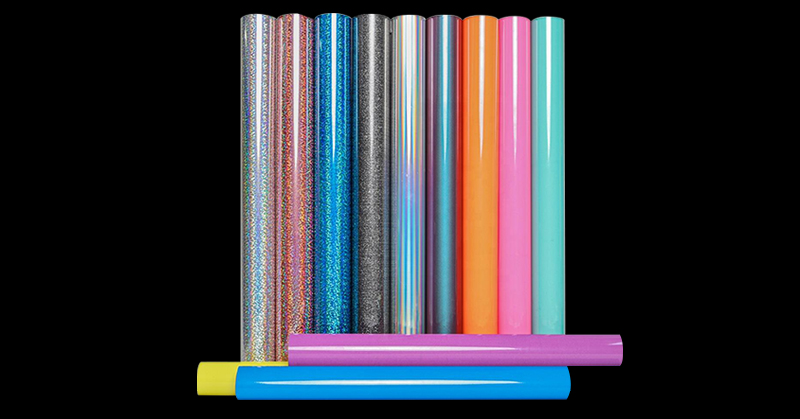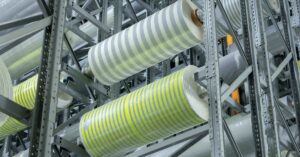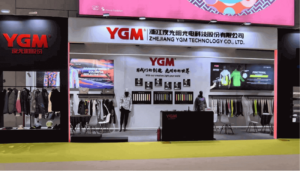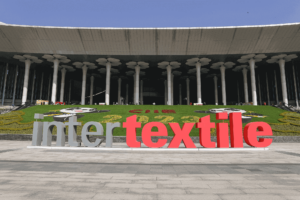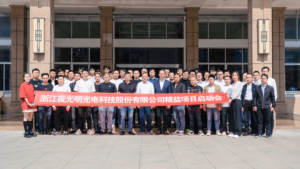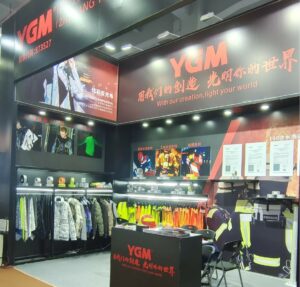In recent years, there has been an increasing demand for heat transfer vinyl (HTV), also known as iron-on vinyl. This type of vinyl is used to create designs on fabric using a heat press. Printable heat transfer tape is available in a variety of colors and finishes, making it a popular choice for crafters and small businesses. There are many applications for HTV, from simply adding names or logos to clothing to creating full-blown designs. In this blog post, we’ll go over some of the most common clothing applications for HTV. Whether you’re a customer or a distributor, you’re sure to find something new and useful here!
What is heat transfer vinyl?
Heat transfer vinyl (HTV) is a type of material that can be used to create custom designs and logos on garments. It is often used by businesses to promote their brand, and by individuals to create unique clothing items. HTV is made from PES or TPU that is heat-activated and adheres to the fabric when heated. The vinyl can be cut into any shape using a cutting machine, and then applied to the fabric using a heat press. Once cooled, the design will be permanently bonded to the fabric. HTV is available in a wide range of colors, making it a versatile material for creating custom designs.
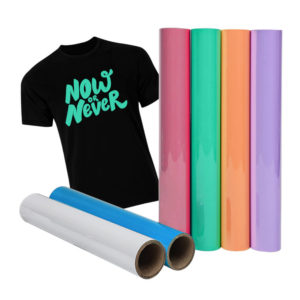
Figure 1: Heat transfer vinyl
It is an easy way to add a personal touch to clothing, towels, and other fabric items. With a wide range of colors and finishes available, HTV offers endless possibilities for customizing your wardrobe. Best of all, HTV transfer tape is simple to use and relatively inexpensive, making it a great option for DIY projects.
Applications of heat transfer vinyl

Figure 2: Applications of Heat Transfer Vinyl
HTV is often used to personalize t-shirts, backpacks, and pillows; however, it can also be used to customize team or club clothing. The design is transferred onto the fabric using a heat press or an iron, and the excess vinyl is then peeled off. Some of the applications of heat transfer vinyl are:
T-shirts:
One of the most popular ways to use HTV is to create custom t-shirts. This is a great option for family reunions, group outings, or just for showing off your personality. You can design your shirt using online tools or pre-made templates and then cut the design out of HTV using a cutting machine.
Backpacks:
HTV vinyl sheets are a great way to personalize your belongings, and there are endless possibilities for how you can use them. Backpacks are one of the most popular items to use heat transfer vinyl sheets. You can add quotes, images, or even just a pattern that you love. Heat transfer vinyl is also durable, so you don’t have to worry about it peeling off or fading over time.
Team or club clothing:
There are many ways to show your team spirit, but one of the most popular is to wear team apparel. Clothing items such as jerseys and sweatshirts can be found sporting the colors and logos of just about any team imaginable. But what if you want to take your team spirit one step further? That’s where heat transfer vinyl comes in. It is a great way to personalize your team’s clothing and uniquely show your support.
Pillows:
Heat transfer vinyl is a versatile product that can be used for a variety of projects, including pillows. It can be cut into any shape or design, making it perfect for personalizing pillows. Best of all, heat transfer vinyl is durable and long-lasting, so you can enjoy your personalized pillows for years to come.
How to heat transfer vinyl?
Heat transfer vinyl (HTV) is a type of heat-adhesive vinyl that can be used to create graphics and text on a variety of fabrics. Unlike regular adhesive vinyl, HTV must be transferred to the fabric using a heat press or iron. To start, you’ll need to have an HTV and a heat press or iron. You’ll also need an extra piece of heat-resistant parchment paper. Once you have all of your materials, preheat your press or iron to the specified temperature. Then, cut your design out of the HTV using a a laser or plotter and weed the extra vinyl. Now it’s time to transfer your design to the fabric. Place the HTV on the fabric, and then place the parchment paper over top. Use the press or iron to apply pressure and heat to the design for the amount of time specified. Afterward, carefully peel the protective film on the surface to reveal your beautiful new design!
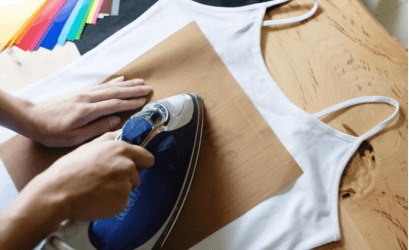
Figure 3: Heat transfer vinyl method
YGM- best heat transfer vinyl supplier in china
As the worldwide market for heat transfer vinyl continues to grow, YGM is poised to be a leading supplier of high-quality heat transfer vinyl. Based in China, we have been in business for over 16 years and have established a reputation for providing top-notch products and outstanding customer service. Our product line includes a wide range of colors, styles, and textures, making it easy to find the perfect solution for any project. In addition, we offer competitive pricing and quick turnaround times, so you can get your projects done on time and within budget. So, if you’re looking for the best heat transfer vinyl supplier or manufacturer that can provide everything you need, look no further than YGM. We’ll be happy to help you make your next project a success.
Frequently asked questions
How long does heat transfer last?
Indeed, HTV may endure for many years. However, this is only true if you learn how to properly maintain it. Why? There are various explanations for this. To begin with, vinyl is an exceptionally durable material that can withstand your cleaning habits. However, its endurance will depend on heat transfer, therefore it may deteriorate with time. Therefore, with proper care, it may easily withstand more than 25 washes!
Which material works best with heat transfer vinyl?
As the name suggests, HTV is a type of vinyl that can be transferred to fabric using heat. There are many different types of HTV on the market, each with its advantages and disadvantages. However, not all fabrics are equally suited for HTV. In general, thicker fabrics like denim or canvas tend to work better than thinner fabrics like t-shirts. This is because the heat from the iron can cause thinner fabrics to stretch or warp. Likewise, synthetic fabrics like cotton, polyester, nylon, and canvas tend to work better. This is because synthetic fibers are less likely to shrink when exposed to heat.
